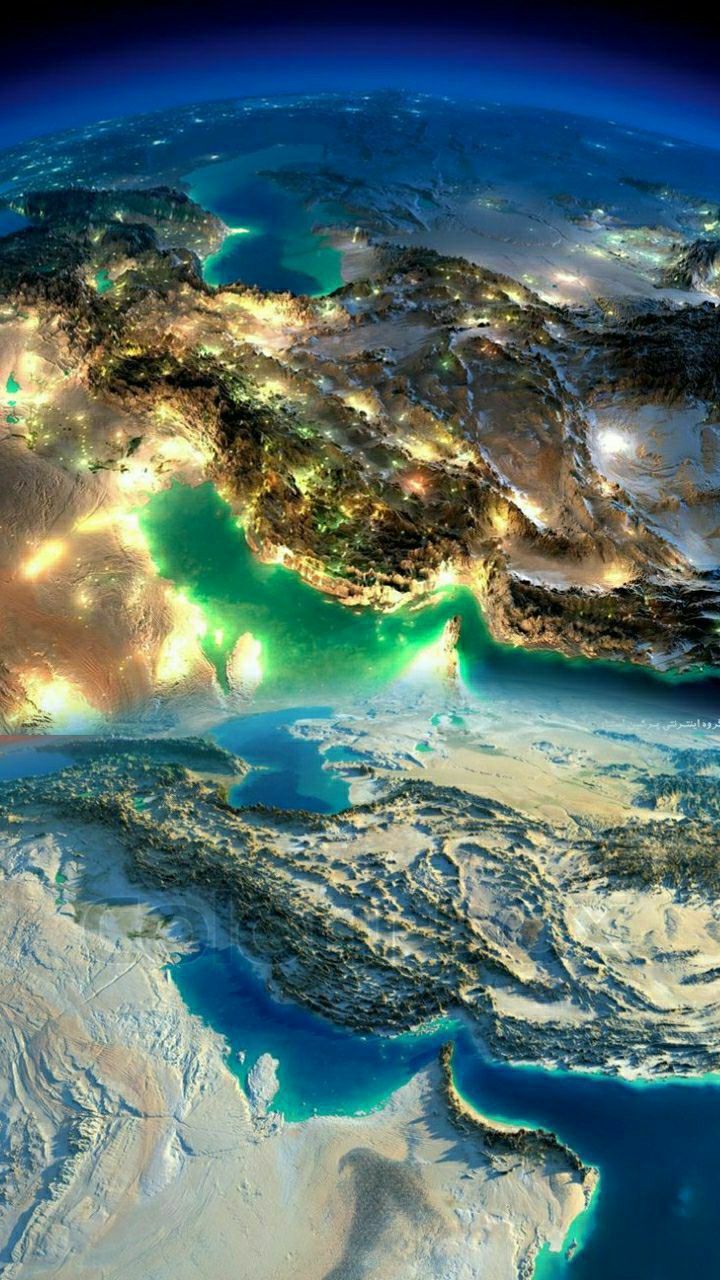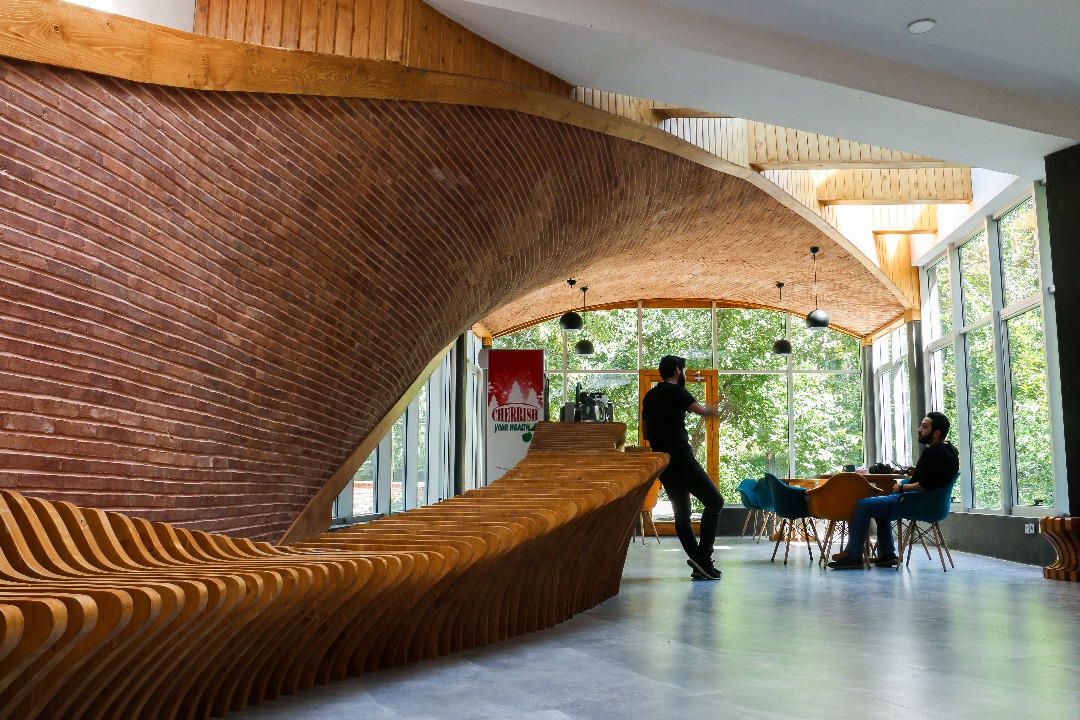Everything is at the disposal of the seller
Let’s start by introducing yourself.
I am Mehdi Moghimian, the founder of Mini-Kala and the CEO of Mobtekar, which is the owner of Mini-Kala. The innovative company started its work in the field of website design and software production, and then we went to the field of content production. Our main team was the programming team, and I also completed my undergraduate studies in the field of information technology engineering. We produced many websites in the first year of work, then we went to web-based systems. The beginning of the emergence of the internet and web space and access to online shopping in Iran led to our day and night activity. The penetration rate of smartphones was increasing, and bank cards were becoming more accessible to people every day than yesterday, and accordingly, we were offering new and different services every day.
How did you get into content production?
At the beginning, we were drawn to the space of content production. It means creating content for different products that people want to sell. We were one of the first companies that offered this service to customers. It started from a place where after designing the website and delivering it to the client, the first question asked by the client was why is it empty?! This made us think that we should offer them a service on the website or store that we design, and we designed a package that offered product photography, SEO and marketing to the customer along with website design. We worked in this field for several years, then we moved to high-tech fields.
What fields did you work in?
We started working in the field of artificial intelligence very early and developed various algorithms. In the field of natural language processing, we focused on data mining and big data, and even went to the Internet of Things. We produced both hardware and provided smart home and green home services. We started working on the blockchain and we were perhaps one of the few companies that launched the blockchain department very early and started working on blockchain products. We went towards the development of a social network under mobile, which was a student-oriented social network. The activity of this social network started with the sharing of student pamphlets.
how did it work?
It was based on the fact that people share their pamphlets with each other, the pamphlets get points and are bought and sold. Then we launched some other fintech start-ups and provided financial banking services. We provided various services to several banking financial centers and then went to the customer club.
Where did the idea of mini goods come from?
At the beginning of the time when messengers or mobile applications became widespread in Iran, Telegram was one of the most widely used and at the time it was the most influential messenger in Iran. There were many product sales channels in Telegram, but Telegram was not designed for sales operations and people had to talk to the channel admin. The admin had to check the stock of the product, the money was transferred to the card, tracking number was given to the buyer so that they can check on the post site whether the product has been sent or not. We designed a Telegram robot that the managers of the Telegram sales channels administered the channel and a web panel was given to them. There, they could enter the goods, give a balance to it, and the payment portal was connected to it. When people entered the channel, a glass button was placed under the product and mechanized the whole process, and there was no need to talk to the admin.
And what does Mini Kala do?
Mini-Kala stands between the buyer and the seller. Where did the idea come from? Corona had entered the country and many sellers who were working offline until then and were shopkeepers had turned to digital sales. This situation had forced them. The shops were closed, the presence of people in the community had decreased, and they had problems earning money. The first problem was that until yesterday they were selling offline and it was difficult for these people to enter the online and digital space and shops and e-commerce space. We conducted a three to six month period of field research and interviewed and surveyed thousands of offline businesses. We asked them to tell their concerns about starting an online business. The first solution was to use Marketplace, whose flagship in Iran has been Digikala for about 8 years. Or you can easily set up an online store by installing WordPress and related plugins. Many of them had done these things and did not get results. We were looking for that challenge, why they don’t get results from this space.
Here, first I have to say a concept and then explain the mini goods. We have a centralized concept and a decentralized concept. When we say that something is centralized, for example, the banking network is centralized; It means that there is a bank, there is a central bank in every country, I have a balance and the bank tells me how much my balance is. So there is a center that decides whether my account is open or closed, how much my balance is, and it determines my transactions. When we say that this space becomes decentralized, the decentralization of the banking space becomes blockchain. The blockchain is a decentralized space that does not tell you how much balance you have or what transactions you had, the network gives you this information. It is the same in the shop and e-commerce space. Marketplace means that there is a centralized space and this centralized space says to sell this product or not to sell this product. For example, DigiKala is a centralized online store that says, “Give me your product, I’ll store it, I’ll standardize it, I’ll create content, or I’ll help you create better content, and I’ll make sure that the purchase process is done correctly.” This is a centralized space, which happens to be a very good space, and we are grateful to the likes of Digikala, who have caused the growth and development of the infrastructure and, on the other hand, the cultural development of online shopping.
And is there a problem with this centralized space?
In a centralized space, the point is that scalability becomes difficult. That is, when you want to increase your stores, you must also increase your warehouses and develop logistics. You should also develop customer management systems. Why? Because everything is in your hands. This makes scalability difficult, and when the space is centralized, it is not easy to accept everyone as a salesperson. When we decentralize this space, it means that there are no more groups in the middle that say, “give me your goods and I will do the logistics, I will standardize” or “I will guarantee”. Like Spark in America, Tao Bao in China, these are so-called social commerce. That is, spaces that do not have a center and only provide infrastructure and space for businesses that want to enter the advertising space. Again, let me clear something up. With store builders, you can simply set up your own store without any programming knowledge. But for development and sales, you have to accept different advertising and customer acquisition costs, which are high for a small or micro business. This is very different from what we call social commerce.
How is this different from Amazon?
The serious difference between Tao Bao in China and Amazon in America is that Tao Bao is worth several billion dollars today. This means that within a few years this business has reached a billion dollars. To understand how big this number is, we have to compare it with BMW. BMW has been around for a century and today it is worth billions of dollars. I want to say how big this social commerce space can be. In Iran, several groups have moved towards social commerce and have presented products that this space is so big that for us, there is no room for dozens of other similar businesses and no one misses anyone’s place. But because social commerce, like Market Place, does not yet have ready-made concepts in the form of a checklist, for example, if you do this, you will be a good social commerce! The world develops its culture according to its situational requirements. There are still no clear standards for it like Market Place, so we see that Spark is not very successful in America even though Amazon is behind it; But Tao Bao succeeds in China.
Why does this happen?
Because we have to customize it a bit according to the audience. That’s why we only knew that we are facing a concept called social commerce, which is the best option for providing services to small businesses. That is, they need a space that does not require knowledge. We are dealing with a seller who is, for example, a good shoe seller. I should not force him to learn panel operation. I should not force him to learn digital marketing. I should not force him to learn content creation. This person’s job is sales. He is either a supplier or a producer. If it is a producer; For example, he knows how to produce shoes. If he is a supplier, he knows how to collect good shoes from the market and sell them in his shop. But I tell him that in order to enter this space, you have to learn these skills. This makes it difficult and usually leads to failure and they no longer go to the digital economy and e-commerce. So, our first condition in Mini-Kala was that people can easily enter the online space and work with it easily.
Who are your target audience?
We considered all age ranges. From the young to the oldest. So this software platform application, no matter what we call it, should be so easy for the user that working with it does not require any special skills. For this reason, at the end of the year, we decided to design a user interface that would be familiar to the user.
Where did you get your inspiration from?
Our user interface was modeled after Instagram because the same 16-year-old person had worked with Instagram and the 60-year-old person was familiar with this space, and there was no need to define or teach new literature for it. In order to reduce the cost of training and the difficulty of working with the platform, we tried to use the same literature as Instagram. This choice had various risks whether we really become like Instagram or not.
Does it work?
We had a very good reception from the users because they knew which option was where. Where is liking, where is leaving a comment, where is the conversation with the seller, and we tried to place e-commerce literature in the heart of this space. We also added a store feature to have a shopping cart. People can add the product to the shopping cart and perform the purchase process such as filling in the recipient’s address and information, entering the discount code, paying and tracking the order, and a wallet was created next to it, which made it easier to manage transactions. In addition to that, we added various services that sellers needed to develop their work, such as marketing services. The seller needed to use services such as affiliate marketing to increase sales. They needed services that could create a discount code for their store or put a discount on some products. A discount management system was created for them. Some needed a cashback service to return money to the buyer after a purchase was finalized. Dozens of different services were created to help sellers increase their sales
What does MiniKala do for sellers?
We reduce the costs of a seller to set up and enter the online sales space. It means that it does not cost anything to set up a store and access all these services, and it uses the pool of Mini-Kala users. Secondly, they benefit from the artificial intelligence developed in Mini-Kala. This makes the tastes of the users to be identified and we see that this user is interested in the field of clothing, for example; For example, he likes shoes. So we introduce the person who put the shoes for sale. This intelligent recommender system designed for users under the application explorer page will increase the seller’s sales. We believe that if a platform that works in this space, especially social commerce, if it does not increase the number of seller invoices, the seller will not be loyal to it.
What is the mechanism of Mini-kala?
Mini-kala tells the seller that the goods are with you, I will not take the goods from you. You are responsible for the logistics, which means I will not send it, you have to send it yourself. I simply give you a space as a store or sales page where you can upload your product information simply by posting on Instagram. There is an environment where the buyer talks to you and not to us. The buyer and the seller talk directly to each other and procure the product through the purchase process in Mini Goods. I will take the money and we will transfer it to your wallet and freeze it and say that the buyer has given the money and it is in your wallet, send the shipment. You send the products to the buyer and the buyer receives them. Whether by post or by any other method.
If it has been sent by post, you enter the tracking code of the shipment and under an API and the contract we have with the post, we will find out that this shipment has been delivered, and our criterion is to notify the post company. The post that told me that the product was delivered, I change the status of the product to “Delivered”. If it is not sent by post, a delivery code is available to the buyer. The seller takes it after delivering the shipment and imports it, and the status changes to delivered. Then the money is released and the seller can withdraw the money and receive it in the first bank cycle. Since our company is a payer, keeping money in a payer account is not particularly beneficial for us. That’s why we do our best to get the money to the seller quickly. Especially a seller who is a small business and doesn’t have enough cash for me to hold his money for two weeks or a month.
Therefore, only the sales platform is provided.
I was looking for that Mini-kala does not sell goods, does not take responsibility, does not interfere in the work of the seller. As I said, we should not teach the salesperson the skills of digital marketing and programming and content production. The platform should also learn that it should not interfere in the work of the sellers. So I don’t interfere in pricing; But due to the challenges that we know arose in pricing in other platforms, we designed an analysis engine that monitors the price of the item that is listed and simply warns the buyer that the price of the item that you are buying is higher than the market price or lower than the market price or It is in the market price range. This analysis helps the buyer to make a better decision and systematically controls the seller so that he does not set an unusual price or make a price in the market. This is the totality of the Mini-kala.
What is the size of the market in which Mini-Kala is active?
When we talk about small business, the closest concrete example to us are the sellers who are currently active on Instagram. They usually received their money card by card. For this reason, when card to card is done, this statistic is lost among the country’s card to card statistics, so to speak, the transaction is calculated offline at all, and there is no official and exact statistics. The only statistics are the statistics that Techrasa published some time ago.
We also measure the size of the market according to the published statistics. In that statistic, if I’m not mistaken, something like four hundred and fifteen thousand Instagram sellers were identified. This statistic states that between one hundred and sixty thousand tomans and four hundred and seventy thousand tomans is the average amount of invoices that are generated in these small businesses, and this shows that we have a market of about one thousand billion tomans in small businesses. It means something close to three hundred thousand invoices per day. But there are other statistics that believe that the percentage of the volume of this market is currently in the hands of up to a thousand businesses.
What are your plans for the future of Mini-kala?
Our focus is to be able to increase the number of businesses in Mini-Kala to at least fifteen thousand businesses by the end of this year and to be able to take a more serious share of the market in new year. We started extensive advertising in March, and our market has increased in just two weeks.
Last year, we were either testing the product or developing our services, or our advertising was limited on the digital marketing space, and before the start of our extensive advertising from the beginning of March, we had managed to attract nearly three thousand sellers. From the beginning of March until now, that is, in the past two weeks, almost twelve thousand new sellers have been added to Mini-Kala, and we think that the number of Mini-Kala products will reach 100,000 products by the end of this year. This statistic from the last two weeks shows how much this business can scale and how fast this growth can be. One of the main characteristics of startups is that they grow very quickly and can quickly grow and scale, and we have seen this clearly in Mini-Kala in the last two weeks. Let’s reach a hundred thousand products.
What businesses do you consider as a competitor?
Mini-Kala is not a substitute for any application or platform. It is another sales channel in addition to all sales channels that sellers have. This means that sellers who are present on platforms A and B are a good thing and should try to maintain their presence there. You get three invoices from A, two from B, four from Jim, and I will bring you one invoice. Because we are looking to increase the sales of that seller, and if we are looking for this, then we must allow him to operate in some places. I emphasize this again, platforms usually become pest over time and become monopolistic to keep everyone before themselves and if someone does an activity elsewhere, they ban it and interfere in the work of their own members. We have made it our mission to try not to interfere with the work of the sellers. Let them produce and manage their own content and be responsible for themselves. We just make the space safe to prevent those few people who sometimes enter these platforms with the intention of cheating or harassing, so that if these things happen, the system can stop it. We hope that Mini-Kala will be able to reach one million variety of products per year and gain its share among the five main platforms of the country.
Final point?
The Mobtacer Company has a long experience in the field of customer clubs. For nearly two and a half years, we have been working on all kinds of customer clubs. From issuing a bank card to providing a customer club through the web application or placing QR code stands in various businesses. This has given us a good experience in working with customer clubs. For this reason, one of the important parts that was discussed in Mini-Kala was the marketing department or customer club. The feature that I would say is unique is the Mini Merchandise Marketing Service. The seller puts a product for sale and the buyer buys the product. But we have another entity called marketer. What does a marketer do? A product that belongs to another person and he does not intend to buy it is offered to another person for purchase. We tried to simplify this service and created a section in the mini-items on our home page called “Beforoosh”. A person who works as a marketing or influencer or advertiser and who is familiar with services such as affiliate marketing enters this service, sees the products that have this capability and the sellers have set marketing rights for them, chooses the sharing option and sends it to another person. If that person buys that product through the link shared by this person, marketing rights will be credited to that person’s account as soon as the invoice is finalized. This is an attractive feature that can generate income for various people who have no initial capital or are influencers. As mini goods, we guarantee that this amount will be deposited into their account; Because the amount of the seller is in the hands of the mini goods and first he gives the marketing right to the marketer and then finalizes the invoice. This was an attractive feature that I would like to mention at the end of the interview. Mini goods services are diverse and we will have to deal with th














Post Comment